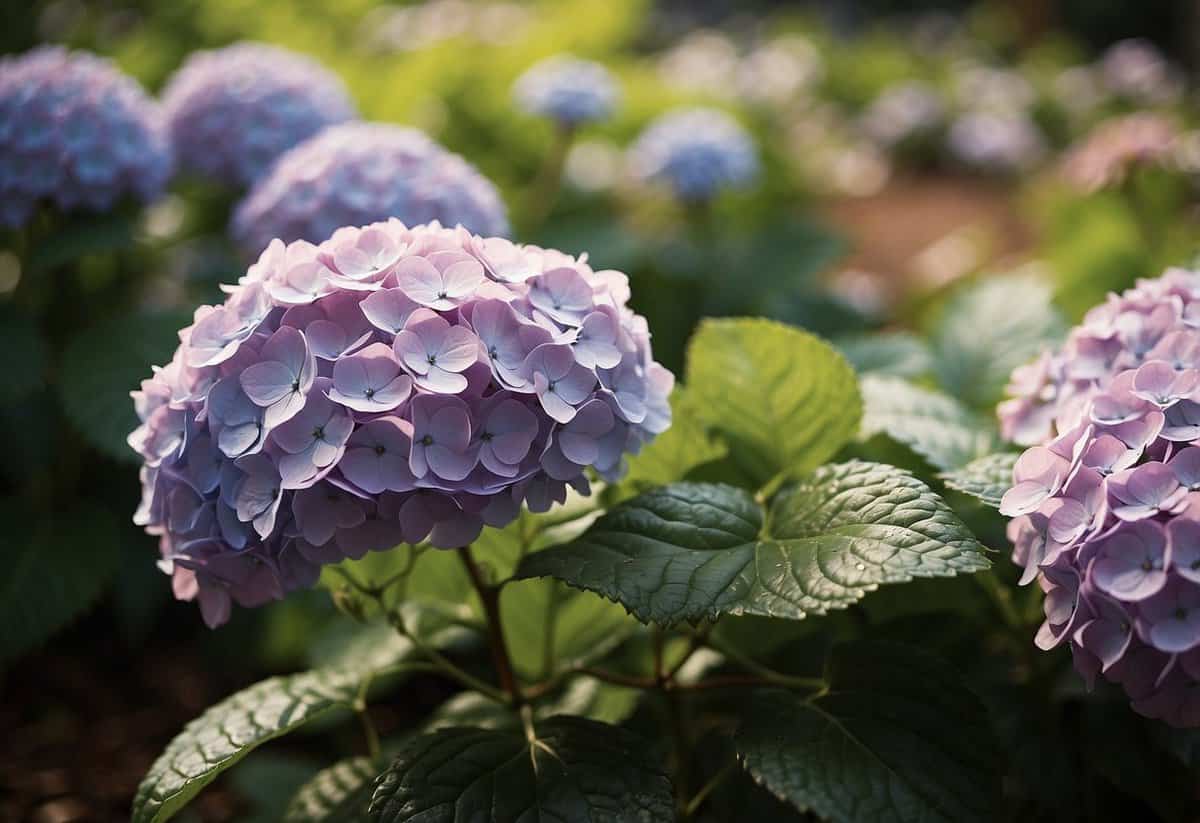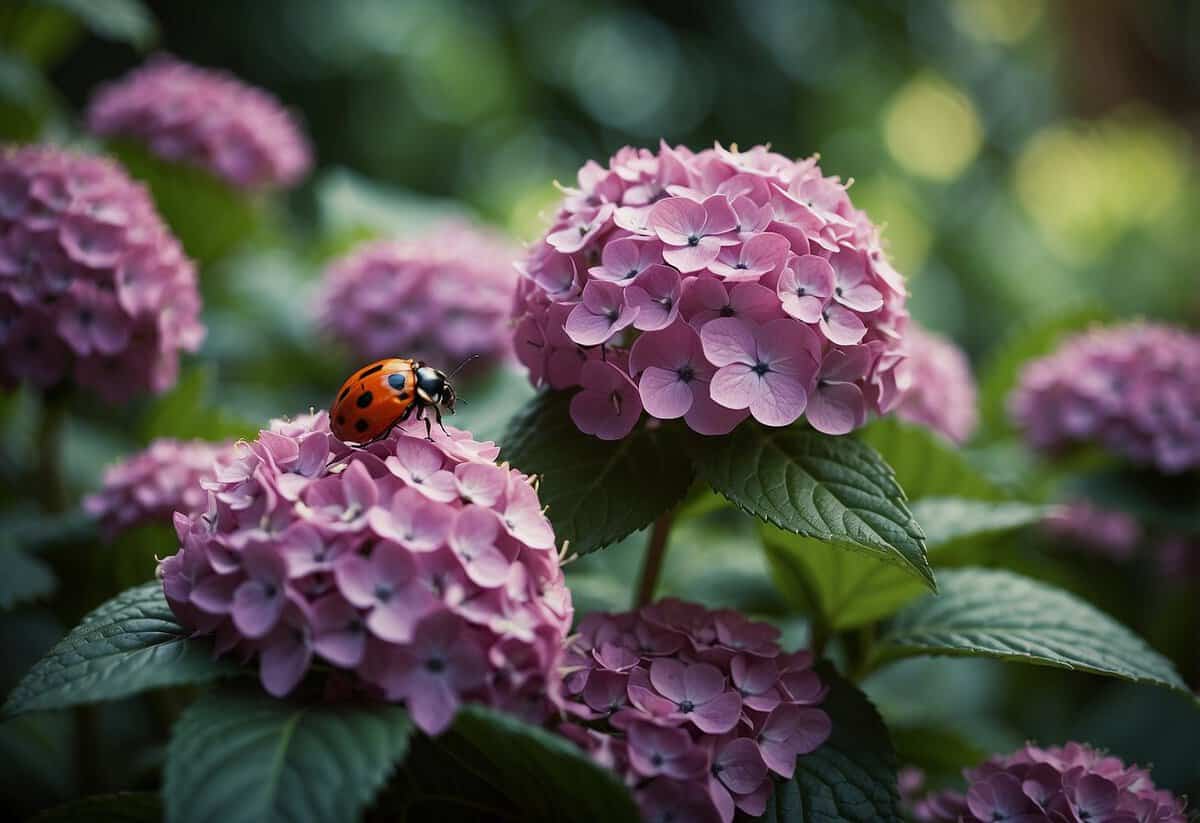How Do I Protect My Hydrangeas from Slugs? Easy Tips for a Healthy Garden
You love your hydrangeas, but garden pests like slugs can cause serious damage. These slimy intruders munch on the leaves, leaving your plants looking sad and unhealthy. To protect your hydrangeas from slugs, there are simple and effective methods you can use.

One easy way to identify slug damage is by looking for slime trails and smooth-edged holes on the leaves. You can use beer traps to lure and drown slugs. Just bury a shallow container near your plants and fill it with beer. The slugs will crawl in and drown.
Another helpful tip is to inspect your plants at night when slugs are most active. By combining these strategies, you can keep your hydrangeas safe and thriving in your garden. More tips and detailed advice are just a click away.
Understanding Slug Damage in Hydrangeas

Slugs can cause significant harm to your hydrangeas, particularly to the leaves and young foliage. Recognizing the presence of slugs and the signs of their damage is essential for maintaining healthy plants.
Identifying Slug Presence
To spot slugs on your hydrangea plants, you should look for slime trails on the leaves and stems. These shiny, slimy tracks are left behind as slugs move. You might find the slugs themselves during the early morning or late evening when they are most active.
Brown eggs can also indicate slug presence. These eggs are typically found in moist, hidden areas around your plants. Checking these areas regularly can help you catch an infestation early.
Common Signs of Slug Damage
You can identify slug damage on your hydrangeas by looking at the foliage. Slugs tend to chew on the leaves, leaving ragged edges and holes. Younger foliage is especially vulnerable.
Flowers may also show signs of damage such as missing petals. Keeping your garden clear of decaying leaves and other litter can reduce slug habitats and make your hydrangeas less attractive to these pests.
By monitoring for these signs, you can take action to protect your hydrangeas from further harm.
Natural Predators and Biological Controls

Using natural predators and biological controls can effectively manage slug populations in your garden. This approach not only helps maintain a balanced ecosystem but also reduces the need for harmful chemicals.
Encouraging Beneficial Wildlife
Encouraging wildlife in your garden can be a great way to control slugs naturally. Birds, toads, hedgehogs, and ducks are excellent slug hunters.
Birds such as thrushes and blackbirds love to snack on slugs. You can attract them by placing bird feeders and birdbaths in your garden.
Toads are another natural predator of slugs. To make your garden toad-friendly, create moist and shady areas where they can hide during the day. Providing logs and rocks can give them the shelter they need.
Hedgehogs are also great at eating slugs. Encourage them to visit your garden by placing small hedgehog houses or leaving piles of leaves and logs. They will happily consume slugs, helping you keep your hydrangeas safe.
Ducks can be an entertaining and effective solution for slug control. Ducks love to eat slugs and will keep the population down. However, ensure that you provide them with proper care and a suitable habitat.
Using Nematodes and Insects
Biological control involves using other organisms to control slugs. Nematodes are microscopic worms that can be very effective in reducing slug populations. They enter the slugs and release bacteria that kills them. Apply nematodes by mixing them with water and watering your garden during wet, cool weather.
Insects such as ground beetles are natural predators of slugs. Create a habitat for these beneficial insects by leaving organic matter like leaves and mulch in your garden. This will give them a place to hide and thrive, ensuring they stick around to help control the slug population.
Encouraging beneficial wildlife and using biological controls can help you manage slugs effectively without harming the environment or your hydrangeas.
Organic Methods to Protect Hydrangeas

Using organic methods to shield your hydrangeas from slugs not only keeps your plants safe, but also ensures a healthier garden environment. Here are some effective strategies:
Barriers and Repellents
Creating barriers can effectively keep slugs away from hydrangeas. Copper tape is a popular choice because slugs dislike crossing it. Wrapping copper tape around the base of the plant’s pot or garden border can act as a deterrent.
Another method is to use mulch. Applying mulch made of rough materials like wood chips or gravel makes it difficult for slugs to travel across. You can also use eggshells. Crushing eggshells and spreading them around the base of your hydrangeas provides a sharp barrier that slugs generally avoid.
Iron phosphate-based baits are another organic option. These baits are non-toxic to pets and wildlife but effective against slugs. Scatter the bait around your plants as directed on the product label.
Natural Slug Deterrents
Beer traps can lure slugs away from your hydrangeas. Place a shallow dish filled with beer in your garden. Slugs are attracted to the yeast and will drown in the liquid. Ensure you replace the beer regularly to keep it effective.
Coffee grounds are another helpful deterrent. Sprinkling coffee grounds around the base of your hydrangeas can create a barrier that slugs avoid due to its abrasive texture and caffeine content.
Introducing natural predators like birds or frogs can also help keep slug populations under control. Providing bird feeders or water features can attract these slug-eating allies to your garden.
These organic methods help protect your hydrangeas from slugs without harming the environment or other beneficial creatures in your garden.
Cultural Practices for Slug Prevention

There are several practices you can adopt in your garden to help prevent slugs from damaging your hydrangeas. These include proper watering techniques and regular garden maintenance.
Watering Techniques
Watering at the right time of day can help keep slugs at bay. Slugs thrive in moist environments, so it’s important to avoid creating conditions where they can easily thrive.
Try to water your hydrangeas early in the morning. This allows the soil and plants to dry out during the day. Avoid watering in the evening, as this can leave the soil too moist overnight, creating a perfect habitat for slugs.
Consider using drip irrigation or soaker hoses instead of overhead watering. This directs the water right to the roots and keeps the foliage dry, reducing the slug-friendly moisture conditions.
Garden Maintenance
Keeping your garden clean and free from debris can significantly reduce slug problems. Slugs often hide under leaves, mulch, and other garden debris during the day.
Regular pruning of your hydrangeas helps improve air circulation and reduces the damp, dark spots where slugs like to hide. Remove any lower leaves that touch the ground to make it harder for slugs to reach the plants.
Avoid using loose mulches like straw or leaves which can retain moisture and provide hiding spots for slugs. Instead, use compost or bark chips, which dry out more quickly and are less attractive to slugs.
Maintain a tidy garden by removing dead leaves, fallen branches, and other debris. This reduces the number of hiding places for slugs and keeps your hydrangeas healthier.







